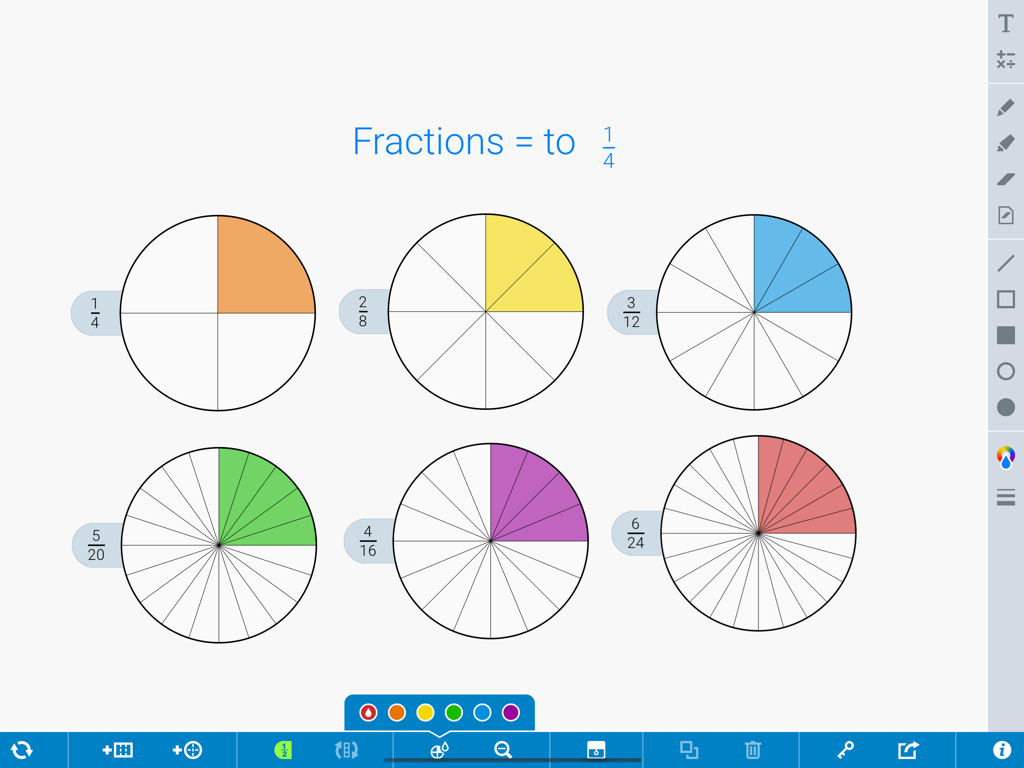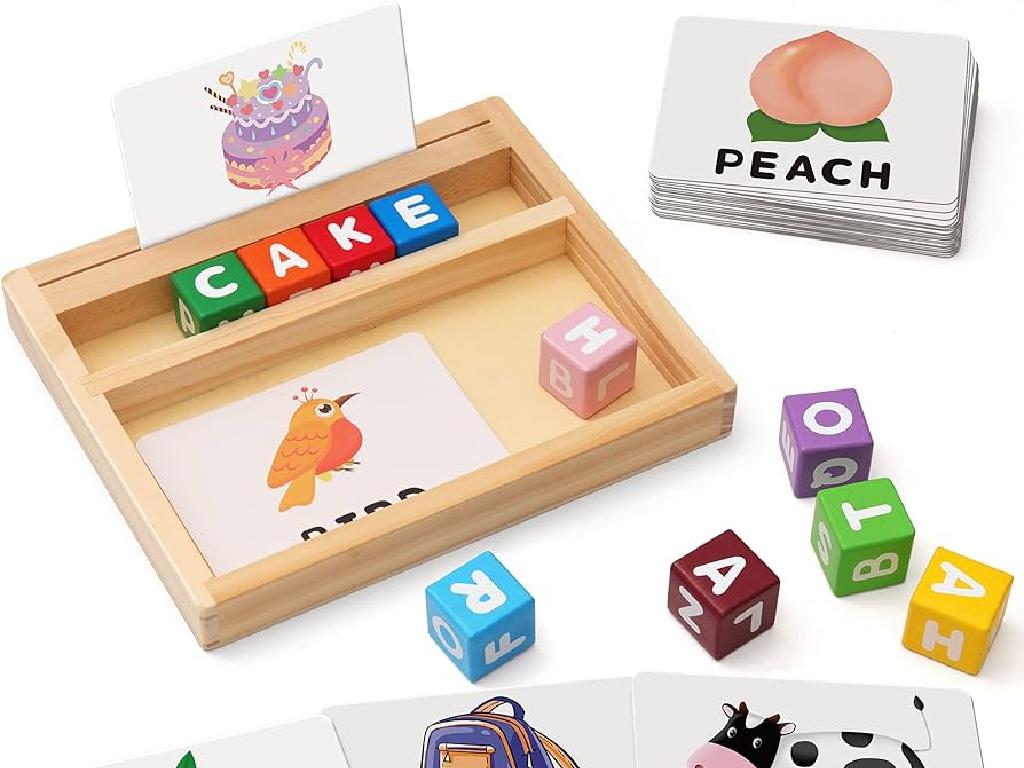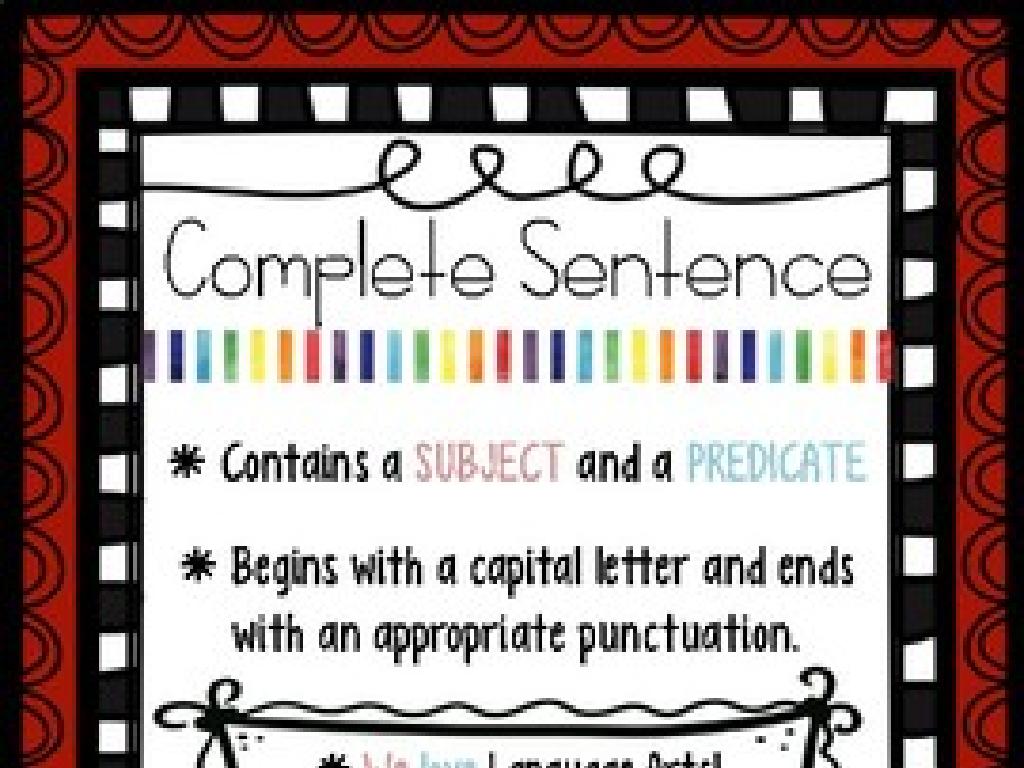Read About Animals
Subject: Language arts
Grade: Third grade
Topic: Informational Texts: Level 1
Please LOG IN to download the presentation. Access is available to registered users only.
View More Content
Exploring Animals Through Reading
– What are informational texts?
– Texts that provide facts about real-world topics
– Reading to learn about animals
– Find out about animal habitats, diets, and behaviors
– Different types of animal texts
– Books, articles, and websites with animal facts
– Engaging with the text
– Ask questions and look for answers while reading
|
This slide introduces students to the concept of informational texts and their importance in learning about the world, specifically animals. Explain that informational texts are non-fiction and contain facts and details about real-life topics. Highlight how reading can be a window into the animal kingdom, offering insights into where animals live, what they eat, and how they behave. Introduce different sources where students can find animal information, such as books, articles, and educational websites. Encourage interactive reading by asking questions and seeking answers within the text, which will help students engage more deeply with the material and enhance their comprehension skills.
Exploring Informational Texts About Animals
– What are informational texts?
– They give us real facts about life.
– Not stories or fairy tales
– Books with animal facts
– Like a book about lions, their habitats, and diets.
– Learn how the world works
– Helps us understand nature and science.
|
This slide introduces the concept of informational texts to third-grade students, emphasizing that these texts are factual and educational, unlike fictional stories or fairy tales. Use examples that are relatable to the students, such as books about animals, which can provide insights into different species, their environments, and behaviors. Highlight the importance of informational texts in learning about the real world, particularly in understanding how various elements, such as animals and their ecosystems, function. Encourage students to think about the last informational book they read and what they learned from it. This will set the stage for further exploration of informational texts in the classroom.
Exploring Informational Texts About Animals
– Table of Contents: Finding chapters
– It’s like a map of the book to guide us.
– Glossary: Understanding hard words
– A mini-dictionary in the back of the book.
– Index: Quick info search
– An alphabetical list to pinpoint information.
– Photos & Diagrams: Visual learning
– Real pictures and drawings help explain better.
|
This slide introduces students to the different features of informational texts, specifically those about animals. The Table of Contents acts as a roadmap to the book, allowing students to jump to sections of interest. The Glossary serves as a tool for learning new vocabulary related to animals. The Index is a quick reference guide to find specific information about animal facts. Photographs and Diagrams provide a visual representation to support the text and aid in comprehension. Encourage students to use these features when they read about animals to enhance their understanding and make the reading experience more engaging.
Exploring Animal Life
– Animals in informational texts
– Discover habitats, diets, behaviors
– Habitats are places animals live, like forests or oceans. Diets are what they eat, and behaviors are how they act.
– Reading uncovers fascinating facts
– Did you know some frogs can freeze in winter and thaw in spring?
– Let’s learn about different animals!
|
This slide is aimed at sparking curiosity about animals among third-grade students. Begin by discussing the prevalence of animals as subjects in informational texts, which can be a fun and engaging topic for children. Emphasize the importance of understanding an animal’s habitat, diet, and behavior as key aspects of their lives. Use the reading material to reveal interesting facts about animals, such as unique survival adaptations or peculiar eating habits. Encourage the students to think of animals they are interested in and what they might learn about them through reading. The goal is to foster a love for reading and learning about the natural world.
Understanding Animal Texts
– Identify the main animal
– Who is the story mostly about?
– Discover the animal’s habitat
– Where is the animal’s home?
– Learn what the animal eats
– What food does this animal like?
– Understand the animal’s role
– Why is the animal special to where it lives?
|
This slide aims to guide students through the process of comprehending informational texts about animals. Encourage them to focus on key details such as the main animal subject, its habitat, diet, and significance in the ecosystem. Use examples like a bear as the main animal, living in the forest, eating berries and fish, and helping to spread seeds through its droppings. These questions will help students think critically about the text and the role of animals in nature. During the lesson, facilitate discussions that allow students to share their thoughts and findings, reinforcing their understanding of the material.
Let’s Read Together: Exploring Animal Facts
– Read a passage about an animal
– Choose a book with interesting animal facts
– Discuss the main points learned
– What are the key facts about the animal’s habitat, diet, etc.?
– Ask questions about the animal
– What do you wonder about the animal’s life or behavior?
– Explore text features
– Look at headings, bold words, and captions
|
This slide is designed to engage third-grade students in a group reading activity focused on animals. Start by reading a short passage about a specific animal, ensuring the text is appropriate for their reading level. After reading, facilitate a discussion on the main points of the passage, such as the animal’s habitat, diet, and unique characteristics. Encourage students to ask questions about the animal, fostering curiosity and engagement. Additionally, highlight text features such as headings, bold words, and captions to help students navigate informational texts. This activity aims to develop reading comprehension and critical thinking skills in the context of learning about animals.
Class Activity: Create Your Animal Fact File
– Pick an animal from our book
– Draw and write about your animal
– What does it eat? Where does it live?
– Share one cool fact about your animal
– Maybe it can do something no other animal can!
|
This activity is designed to engage students with the material by allowing them to apply what they’ve learned about animals in a creative way. Each student will choose an animal from the reading material and create a fact file that includes a drawing of the animal, information about its habitat, diet, and one interesting fact that makes the animal unique. Teachers should provide paper, coloring materials, and assist with research if necessary. Possible variations of the activity could include working in pairs, presenting the fact file to the class, or creating a classroom ‘animal fact file’ gallery. This activity will help students practice their research skills, writing, and ability to extract relevant information from texts.
Sharing Our Animal Fact Files
– Present your animal fact file
– Share interesting facts about your chosen animal
– Listen and learn from classmates
– Pay attention to new animal facts from friends
– Discuss informational text benefits
– How did reading help us gather facts?
– Engage in class discussion
|
This slide is for a class activity where students will present the animal fact files they have created. Encourage each student to speak clearly and share at least three interesting facts about their chosen animal. While listening to others, students should take note of any new information they learn. After presentations, lead a discussion on how reading informational texts about animals has contributed to their knowledge and fact file creation. Emphasize the importance of reading for learning and understanding new information. Provide a supportive and positive environment for students to share and engage with each other’s work.
Wrapping Up: Animals and Informational Texts
– Recap on informational texts
– We explored features of informational texts and how they teach us about animal life.
– Motivation to read more
– Discover more animal facts and stories by reading different texts.
– The joy of learning about animals
– Remember how exciting it was to learn about your favorite animals?
– Reinforce reading as fun and educational
|
As we conclude today’s lesson, let’s remember the key features of informational texts and how they help us learn factual details about animals. Encourage the students to continue reading various informational texts to satisfy their curiosity and expand their knowledge about the animal kingdom. Remind them of the fun facts and interesting stories they’ve learned today, and how reading can be both enjoyable and informative. Reinforce the idea that reading is not just for school, but it’s also a way to explore the world around them. Suggest visiting the library to find more books about animals and offer some titles as recommendations.





